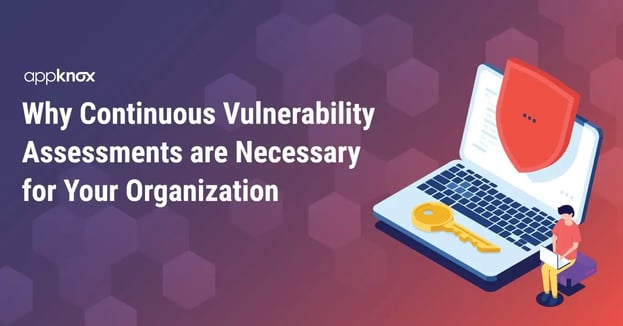
BLOG

BLOG
Are you a frequent internet user? Do you use your mobile a lot? Are you having a lot of applications on your smartphone? Well, if your answer to one of these questions is yes, have you ever thought, is your smartphone secure enough to protect you from cyber-attacks and data breaches?
According to Symantec’s Internet Security Threat Report for 2018, the number of malware variants for smartphones increased to about 54 percent since the year 2014.
With the increase in cybercrimes on end-user devices, mobile security has become a major concern.
Securing a mobile device includes the introduction of many security measures. A security tactic must not only include a scan of the smartphone data and files but also should scan the applications installed. And thus, we have to lead to the most obvious and the most followed security improving method – Vulnerability Assessment.
Through this blog post, we’ll be discussing why continuous Vulnerability Assessments are necessary for your organization as well as additional security measures that will further help enhance the overall security and defense of your organization.
For every kind of organization, information is necessary and important. Information Security refers to the practice of securing the information present on a device by employing security measures. This saves the integrity and the confidentiality of data from unwanted users, saving it from hackers.
The Information Security scheme uses various tools, security designs, and software to create a line of defense from the attackers.
Vulnerability Assessment, also known as vulnerability testing, is a type of testing environment made for applications and software, including a set of tasks performed with the help of some software to evaluate the security risks involved and to check the vulnerability of a system so the company and the team can minimize the window of exposure.
As mentioned earlier, having a single vulnerability test on a system won’t work. Information security is an ongoing process, and so, only multiple and advanced tests on the system will tell about its security dynamics.
A proper vulnerability assessment follows up with many challenges and limitations.
The security managers cannot rely on a system that has been in place for a long duration. Every system requires its own set and sequence of security measures, and they also need to be appropriately updated over time with a constant flow of information.
Using automated scans by the system for any possible vulnerability and manual tests by developers on the security breach will also help in reducing any security problems.
Good Read- Things to Consider While Choosing The Right Vulnerability Assessment Tool
Vulnerability Assessment is considered to be the greatest tool while managing the security tactics of mobile or any system. The repeated assessment of defense not only reveals the shortcomings of a security model but also helps in improving it. Having diagnosed the system repeatedly leads to many benefits.
Penetration tests are the best way to recognize and, thus, optimize a system to reduce security vulnerability from cyber crimes. Small security problems such as inadequate security settings, unencrypted passwords, or even an unknown flaw can be easily found with this test.
Penetration tests include a sequence of actions, similar to those in a hacking, including the breaching of security measures to define an approach one step ahead of the bad guys. Since it is also a vulnerability assessment, it is strongly recommended to perform such tests over short periods. There are two commonly known security penetration testing.
This testing includes a series of actions based on the previous data on the vulnerability of the software. Also known as Static Application Security Testing (SAST), this test tries to penetrate the security of an application as a viewpoint of an informed attacker, the one who aware of the security measures of a system. This test takes less time than the other one because of the knowledge of security investigations. However, it is not as realistic.
This test is the most vulnerable type of analysis. It tells about the security measures of a system in case the attacker is uninformed. For instance, the case when an uninformed hacker or cracker will try to crack through the security walls and try to access any information. Although it stimulates a more realistic cyberattack than the other one, the testers might not be able to perform some attacks because of the lack of security information on the network.
Security measures are not something that you can use for an extended period. As the technologies develop, new malware will surely penetrate your security, and so, one must make sure to reduce those risks by running multiple security tests, including advanced security measures. Some other security measures are here.
The CIS security controls are a set of actions that are recommended to be taken to form a line of defense from the cybercrime attacks.
Organizational Dynamics are the approach and the models of security that organizations should take into consideration while designing their security system.
Any system taken for security control is not perfect. Every technology has its flaws and limitations. So, rather than focusing on the perfect one, we should adopt the above-mentioned security measures and work on a system that considers the basic principles, the evolving security ecosystem, digital transformation, and is practical to implement in nature.
.jpg?width=50&height=50&name=10606600_10204086667262761_7381430219125488912_n%20(1).jpg)
Hackers never rest. Neither should your security!
Stay ahead of emerging threats, vulnerabilities, and best practices in mobile app security—delivered straight to your inbox.
![]() Exclusive insights. Zero fluff. Absolute security.
Exclusive insights. Zero fluff. Absolute security.
![]() Join the Appknox Security Insider Newsletter!
Join the Appknox Security Insider Newsletter!
